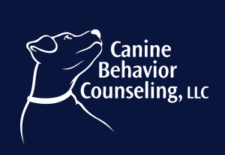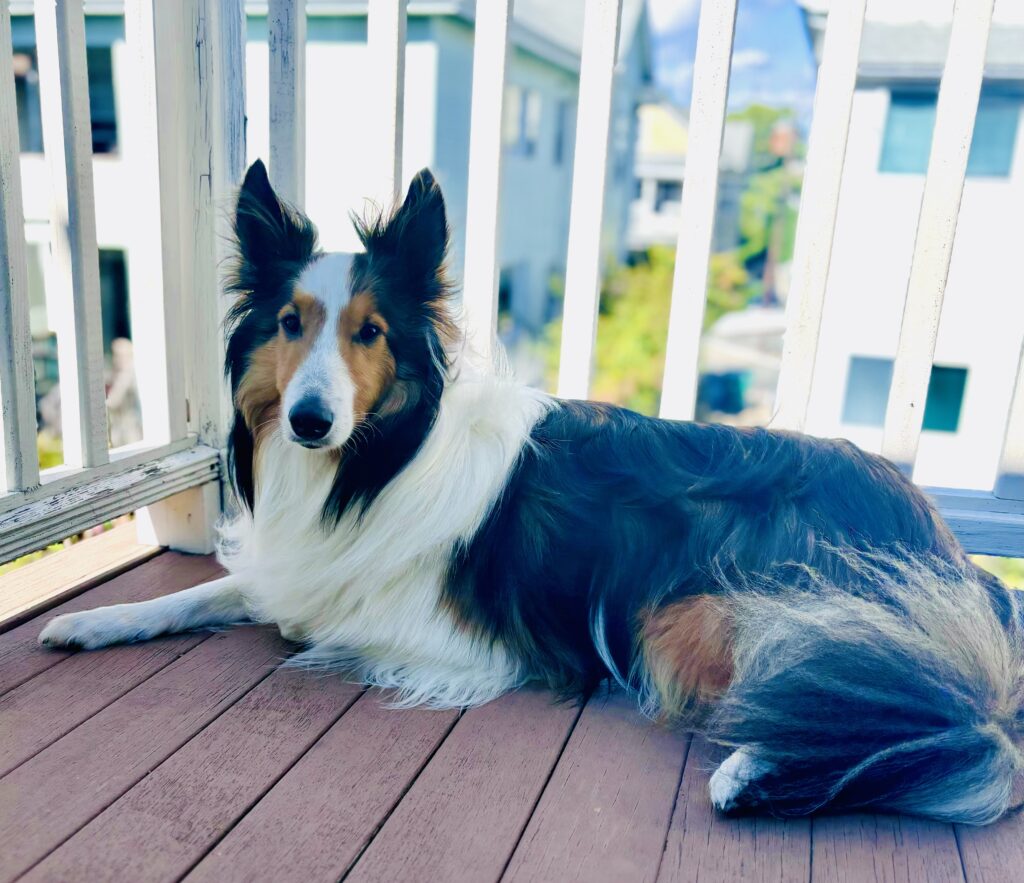I understand
When my adult daughter asked if I could watch Ollie, her one-year-old reactive Shetland Sheepdog, for the weekend, I immediately said yes. Ollie, though sweet and affectionate to my daughter, struggles with big emotions around new people, dogs and in new environments. His reactivity, a mix of anxiety and defensive aggression, makes all social situations challenging. The more opportunities I have with him, the more chances I have to add new experiences to his world — and help him develop a little more trust, and social confidence.
Progress with Ollie requires a balance of patience, gentleness, and consistent structure. Like many of you reading this, I, too, have learned to embrace the small victories along our training journey. I remember the first time Ollie was able to stay focused on me outside. What a great feeling! This small achievement has led me to be less frustrated and more patient with him.
A little history
Although Ollie has a big personality and a bark to match, he is incredibly sensitive by nature. He came to us from Sheltie Rescue, surrendered as a pup because he was terrified of the world around him. When we first met Ollie, he wouldn’t let us come near him. Even treats tossed his way went untouched. It was heartbreaking to see him that day—trotting about with his tail dragging in the grass, barking at us to keep our distance. I knew then that Ollie would need a lifetime of patient support, as his ability to trust new people or dogs developed very slowly.
For Ollie, trust isn’t something that happens quickly or easily. Instead, it takes many positive, slow interactions with the same calm person or dog before he begins to feel comfortable. He needs consistent reassurance that he’s safe. I have learned not to step towards him too quickly or wear my heavy outdoor boots when he is visiting.
Greetings are stressful
When Ollie arrived late that Friday, I was in the kitchen cooking. I began cutting some steak to use to help Ollie trust me, as this was only the third time he had met me. On this occasion, however, Ollie pulled the leash from my daughters hand as she entered my kitchen. I heard him barking rapidly behind me and before I could turn to speak to him, I felt his muzzle on my left calf. He nipped at my pants as I stood facing away from him.
I remember turning and saying to Ollie in a calm voice “hey, that’s rude”. What I saw was a scared dog with a compressed body and tucked tail, yet he was baring his teeth with tightly closed jaws, staring round eyes and a tense face. The closed mouth with teeth showing is a real threat from a dog who is saying, “Make the wrong move and I will bite you!” Yet, the rest of his body was saying I want out of this situation. He was clearly in a state of conflicted arousal. I felt sorry for him.
Adding value
I reached in the pan and showed him a piece of steak, he immediately softened his facial expression, raised his nose and offered a sit. This thoughtful response told me he had just returned to his thinking brain. While he sat about 4 feet from me, I tossed a piece of steak, over his head. I tossed a second piece and then offered him a piece from my hand while still facing the stove as I spoke to him.
I tried to take a step and he quickly slid back into defensive mode noted by his barking and backing away while staring at my feet. I asked my daughter to walk him away so he could calm down. When he returned, he was straining to get to me as I held a plate of steak. I showed him a piece and tossed it behind him. I began to walk about slowly, never directly at him, while tossing the meat.
Before long, he was walking near my left leg offering sits for the yummy meat. We have been best friends ever since. I am careful not to intimidate him, but I do set basic boundaries when he is in my home using a calm tone and clear body language.
Slow transitions
Ollie’s nervous system is often in overdrive, as he’s constantly scanning his surroundings for potential threats. This heightened alertness is easily seen as he often moves from one window to the next looking for a threat. His arousal increases significantly whenever he steps outside. Like clockwork, the moment he exits through any door, he immediately starts looking around, ready to react defensively. His response is usually a series of loud, sharp barks, which he seems to think will help keep him safe.
This constant vigilance becomes more obvious when on a leash. Rather than walking in a straight line, Ollie tends to zigzag; pulling in different directions as he tries to process every sound, scent, or movement around him. His nervous energy and hyper-awareness make it challenging for him to settle into a calm, steady pace on walks, even in quieter areas.
Socialization is singular
With Ollie’s sensitive nature, it’s easy to accidentally “sensitize” him—heightening his anxiety—rather than helping him gradually become comfortable and desensitized. Ollie becomes skittish then shutdowns, in any social setting showing he is overwhelmed. He sits down, flattens his ears to his head, pants, and looks away from approaching people or dogs.
Ollie does best when socialized with one person. This allows him to truly recover from this one person. With repeated exposure, Ollie is learning to trust one person at a time.
This is also true for new environments. We often let Ollie sit in the safety of the car while he watches the world go by. From the security of his familiar space, he can observe people, dogs, and new environments without the pressure of direct interaction. This way, he gets used to seeing new things without feeling overwhelmed. Only after he’s calm and comfortable watching from a distance do we gently introduce him to new settings or experiences outside of the car. This gradual exposure helps Ollie feel more secure, allowing him to adjust to the world at his own pace.
Skills involve “thinking”
#1. Wait
Ollie use to push through my legs and bolt out the door tossing his head back and barking without even looking at the setting. This habit needed to change! With Ollie’s leash on, I asked him to “walk” about my home with me. When I said “wait” I stopped moving my feet and rewarded him with food, when he stopped moving. After several short sessions, I tried it at the doors to rooms in my home.
I then began to ask him to “wait” at doorways as we went outside. If Ollie hears a sound he cannot resolve from a person or car, he immediately barks. When this happens, we step back in the house and wait until he calms down, then try again. This process of slowing transitions and asking Ollie to “think” has reduced his barking dramatically.
#2. Sit
I realize the sit cue seems very basic, but if a dog cannot perform this behavior fluently, they are possibly in pain, do not understand the behavior or are overly aroused and unable to “think”. In Ollie’s case he is a healthy dog with high arousal that impedes his ability to “think” in many different settings. Asking our emotional or reactive dogs to spend more time thinking should reduce their arousal and their barking. You can ask them to sit for treats, their meal, before walking out the door or jumping out of the car, and when greeting people or a friendly dog. These requests are all beneficial in building a strong habit of “left brain” activity in our emotional dog.
#3 Trick Training
Depending on your dogs breed, teaching appropriate tricks is a fun way to help your dog stay engaged with you instead of reacting. With Ollie, I like to reinforce simple tricks he already knows, especially when he’s in situations where he might otherwise feel anxious. For instance, when we’re in my garage, he may hear my neighbors talking, even though he can’t see them, which can make him nervous. By asking him to perform familiar tricks like “paw” or “spin,” I’m helping him stay calm and connected to me.
I also use my deck as a training space, Ollie is learning to feel secure there, even though he can often hear neighborhood children playing through the woods. If he’s left alone out there, he tends to fall back into his old habit of running around barking like crazy! But if I’m with him, asking him to do fun tricks like “spin,” “paw,” “down,” “high five,” and “back up,” he’s much more likely to focus on me rather than on the noises.
#4 Settle
This was the hardest skill to teach Ollie, as he is a fairly high energy. This means he has a lot of energy to put into pacing about. At first, he would only lie down for me for a minute or two. With time and consistent practice, he’s learned to settle in my home, when on my deck or in my garage. While he does occasionally bark when he hears children’s voices nearby, these barks are softer and slower in nature. It is clear, Ollie is much more relaxed and happy in these settings then he was initially.
Summary
For Ollie, slowing down all transitions involved carefully exposing him to any new setting but doing so in a way that he could handle without becoming overwhelmed. Opening doors, but pausing before walking him out. Parking the car and sitting there several minutes before opening the door. Standing with the car door open, before asking him to jump out all. All of these practices in slowing things down reduced Olli’s barking episodes.
For Ollie, a highly reactive dog, desensitization has been a game-changer; allowing him to navigate my home environment with a greater sense of calm self-confidence. By engaging Ollie in familiar, enjoyable tricks—like “spin,” “paw,” and “high five”—while he hears but cannot see people or dogs nearby, I gradually helped him get used to these sounds. This technique helped Ollie feel safe in my settings which strengthened his environmental confidence and our connection.
Success is a process
Ollie is building a foundation of behaviors that encourages him to “think” when at home, in my yard, on our walks and in slightly busier settings. Over time, Ollie has become more adaptable and can better tolerate new experiences that would have once triggered an intense reaction. This process was about creating a world that feels manageable for Ollie, one positive experience at a time.


